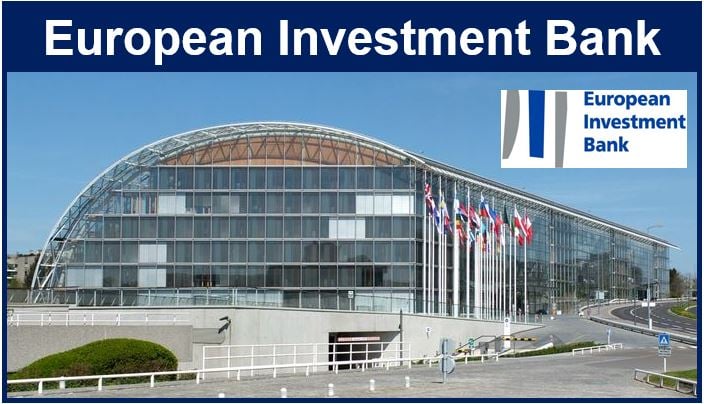The European Investment Bank (EIB) is a non-profit lending institution of the European Union (EU) for investments in infrastructure projects such as communications and roads, plus business development within and outside the EU.
It should not be confused with the European Central Bank, which is the Eurozone’s central bank, i.e. the central bank of the countries that gave up their national currencies and adopted the euro.
The EIB was founded in 1958 under the Treaty of Rome. It is a ‘policy-driven bank’ that belongs to EU member states, which set its broad policy goals and monitor the two independent decision-making bodies: the Board of Directors and the Board of Governors.

It claims to be the only bank owned by and representing the interests of the EU member states.
The European Investment Bank, which is the largest public lending institution in the world, says it uses its financing services to bring about social cohesion and integration in Europe.
More than 90% of the EIB’s activities are focused on Europe, while the rest supports the EU’s external development policies.
European Investment Bank: lending, blending and advising
According to the EIB, its activities cover three main areas:
Lending: most of its financing is done through loans. However, it also offers equity investment, guarantees and microfinance.
Blending: its support facilitates the unlocking of financing from other sources, such as from the EU budget. This is “blended together to form the full financing package.”
Advising: it also helps with administrative and project management capacity, which facilitate the implementation of investments.
The EIB usually finances about one-third of each project (as much as 50% in some cases). Its participation encourages private and public sector operators to make investments which otherwise might not have been made.
The EIB says:
“All the projects we finance must not only be bankable but also comply with strict economic, technical, environmental and social standards. Our corps of 300 engineers and economists screens every project, before, during and after we lend. We work hard to be accountable to EU citizens.”
Its annual lending rose from ECU 10 billion in 1988, to €45 billion in the mid-2000s. In 2009 lending jumped to €79 billion as a temporary response to the global financial crisis. In 2014, it lent €77 billion.
The EIB is partly financing several current projects in Europe, including Crossrail and the Manchester Metrolink Phase 3 in the UK, and the Eurasia Tunnel and Marmaray Railway in Turkey.
Video – European Fund for Strategic Investments
This European Investment Bank video explains how years of crisis threatened Europe’s potential for innovative growth and undermined its competitive edge, which relies on investment. Good projects currently strugge to find investment in Europe.
Even though there is money available in the system, economic uncertainty discourages many investors from taking risks. The ‘Investment Plan for Europe’ is putting EU money back to work – for the benefit of all Europeans.
